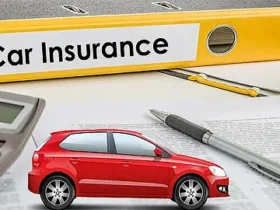Introduction to Bike Insurance
What is Bike Insurance?
Bike insurance is a policy designed to protect you and your bike against various risks, including accidents, theft, and damages. It ensures that you won’t bear the financial burden alone in the event of an unfortunate incident. Whether you ride a sports bike, cruiser, or a daily commuter, having bike insurance is crucial for safeguarding your investment and peace of mind.
Why is Bike Insurance Important?
Having bike insurance is a legal requirement in many countries and a wise financial decision. It offers protection against third-party liabilities, covers the repair costs of damages, and even compensates for theft. The bike insurance cost might seem like an extra expense, but its security and coverage outweigh the initial investment.
Types of Bike Insurance Policies
Comprehensive Bike Insurance
Comprehensive bike insurance is the most extensive coverage option, protecting against many risks, including third-party liabilities, damages to your bike, theft, and even natural calamities. This policy is ideal for those who want complete peace of mind while on the road.

Third-Party Liability Insurance
Third-party liability insurance is the most basic form of bike insurance required by law. It covers any legal liabilities arising from an accident that causes injury or damage to a third party. However, it does not cover the damage to your bike.
Standalone Own-Damage Cover
This policy covers damages to your bike in accidents, natural calamities, or theft but does not include third-party liabilities. It’s ideal for those who already have a third-party liability cover and are looking for additional protection for their bike.
Legal Requirements for Bike Insurance
In most countries, third-party liability insurance for bikes is mandatory. Riding without this insurance can result in fines, legal consequences, and even suspension of driving license. Understanding and adhering to the legal requirements of bike insurance is essential to avoid any legal hassles.
Types of Bike Insurance Coverage
Coverage Options in Bike Insurance
Understanding the different coverage options available in bike insurance is vital to choosing the right policy.
Liability Coverage
Liability coverage protects you against any legal liabilities that may arise if you cause an accident resulting in injury or damage to a third party. It’s a crucial part of any bike insurance policy, ensuring that you are covered against claims from others.
Collision Coverage
Collision coverage pays for the damages to your bike in a collision with another vehicle or object. This is particularly useful if your bike is damaged in an accident, as it covers the repair costs.
Comprehensive Coverage
Comprehensive coverage offers protection against a wide range of risks, including theft, vandalism, fire, and natural disasters. It’s an all-encompassing coverage that protects your bike under almost any circumstance.
Personal Injury Protection
Personal injury protection covers medical expenses for injuries the rider and passengers sustained in an accident. This coverage is essential for ensuring that you are financially protected in the event of a severe accident.
Uninsured/Underinsured Motorist Coverage
This type of coverage protects you if you are involved in an accident with a motorist who doesn’t have sufficient insurance. It ensures that you are not left to cover the costs of repairs or medical expenses on your own.
Add-On Covers in Bike Insurance
Enhancing your bike insurance policy with add-on covers can provide extra protection tailored to your needs.
Zero Depreciation Cover
A zero depreciation cover ensures that the depreciation of your bike’s parts is not factored in during a claim. This means you’ll receive a higher payout without deductions for wear and tear, making it a valuable add-on for new or high-end bikes.
Table of Contents
Roadside Assistance Cover
Roadside assistance covers provide support if your bike breaks down on the road. Services include towing, minor repairs, and even fuel delivery, ensuring you’re never stranded.
Engine Protect Cover
Engine protection coverage is crucial for those who want to safeguard their bike’s engine from damage due to water ingress or oil leakage, which is usually not covered under a standard policy.
Return to Invoice Cover
This cover ensures that if your bike is stolen or completely damaged, you’ll receive the total invoice value rather than the depreciated market value, offering maximum financial protection.

Passenger Cover
Passenger cover provides financial compensation to the pillion rider in case of an accident, ensuring that your companion is also protected.
Consumables Cover
Consumables like engine oil, nuts, and bolts are often excluded from standard policies. A consumables cover ensures these costs are covered during repairs, reducing out-of-pocket expenses.
Understanding Policy Inclusions and Exclusions
Understanding what is included and excluded in your bike insurance policy is crucial for avoiding surprises during a claim. Inclusions typically cover damages from accidents, theft, natural disasters, and third-party liabilities. Exclusions often include normal wear and tear, mechanical breakdowns, and damages incurred while riding under the influence of alcohol.
How to Choose the Right Bike Insurance
Assessing Your Bike Insurance Needs
Choosing the right bike insurance starts with assessing your specific needs.
Factors Influencing Bike Insurance Premiums
Bike insurance costs are influenced by several factors, including the age and model of your bike, your location, your riding experience, and even your claim history. Understanding these factors can help you choose a policy that offers the best value for money.
Evaluating the Coverage Amount
Evaluating the coverage amount based on your bike’s value and financial capacity is essential. Underinsuring your bike can leave you vulnerable to significant losses while overinsuring can result in unnecessarily high premiums.
Choosing the Right Add-Ons
Selecting the right add-ons is crucial for tailoring your bike insurance to your needs. Whether it’s a zero depreciation cover or roadside assistance, choosing add-ons that suit your riding habits can enhance your protection.
Comparing Bike Insurance Policies
With numerous options available, comparing bike insurance policies is a critical step.
Importance of Comparing Premiums
Comparing premiums from different insurers can help you find the most affordable bike insurance without compromising coverage. Tools like online bike insurance quotes make comparing and choosing the best policy more accessible.
Understanding Policy Terms and Conditions
Reading and understanding the terms and conditions of a policy is essential to avoid surprises. Before deciding, ensure you are fully aware of the coverage, exclusions, and claims process.
Review of Top Bike Insurance Providers
It’s also beneficial to review and compare the offerings of top bike insurance providers. Look for companies with a strong reputation, good customer service, and a hassle-free claims process.
Online vs. Offline Bike Insurance Purchase
When it comes to purchasing bike insurance, you have the option to buy online or offline.
Pros and Cons of Online Purchase
Buying bike insurance online offers several benefits, including convenience, instant policy issuance, and the ability to compare multiple policies quickly. However, it may need more personalized service than some prefer when buying insurance.
Pros and Cons of Offline Purchase
Purchasing bike insurance offline through an agent or broker offers a more personalized experience. You can get advice tailored to your needs but might miss the ease of comparison and lower premiums available online.
Understanding Bike Insurance Premiums
What is a Bike Insurance Premium?
A bike insurance premium is the amount you pay the insurance company for coverage. It’s typically paid annually and varies based on factors such as the type of coverage, your bike’s make and model, and your details.
Factors Affecting Bike Insurance Premiums
Age and Model of the Bike
The age and model of your bike significantly influence the premium. Newer, high-end models tend to have higher premiums due to their higher market value and cost of repairs.

Rider’s Age and Experience
Younger riders or those with less experience might face higher premiums due to the perceived higher risk of accidents. On the other hand, experienced riders with a clean record often enjoy lower premiums.
Location and Usage
Your location also affects the cost of bike insurance. Riders in urban areas with high traffic and accident rates may pay more than those in rural areas—the bike usage, whether for daily commuting or occasional rides, also influences the premium.
Claim History
A clean claim history often results in lower premiums, while a history of frequent claims can increase your premium. Insurers view riders with multiple claims as high-risk.
No-Claim Bonus (NCB)
The No-Claim Bonus (NCB) is a discount for every year you don’t file a claim. Accumulating NCB over the years can significantly reduce your bike insurance cost.
How to Calculate Bike Insurance Premium?
Calculating your bike insurance premium involves considering all the factors mentioned above. Online tools allow you to instantly enter your details to get an accurate bike insurance quote.
Ways to Reduce Bike Insurance Premiums
Avail No-Claim Bonus
Maximize your NCB by riding safely and avoiding unnecessary claims. Over time, this can lead to significant savings on your premium.
Install Anti-Theft Devices
Installing certified anti-theft devices can reduce bike insurance costs by lowering the theft risk.
Opt for Higher Voluntary Deductibles
A voluntary deductible is an amount you agree to pay out of pocket before the insurer covers the rest. Opting for a higher deductible can lower your premium, but ensure it’s an amount you can afford.
Renew Your Policy on Time
Timely renewal of your bike insurance policy ensures you don’t lose any accumulated benefits, such as the NCB. Delayed renewals can also result in a lapse in coverage, leading to higher premiums.
Choose a Lower IDV (Insured Declared Value)
Choosing a lower IDV for your bike can reduce the premium, but it also means a lower payout in case of a total loss. Balance your IDV with the right coverage to ensure adequate protection without overpaying.
Claims Process in Bike Insurance
Types of Bike Insurance Claims
Cashless Claims
In a cashless claim, the insurer directly settles the repair costs with the network garage, and you don’t have to pay anything upfront. It’s a hassle-free option that saves you from out-of-pocket expenses.
Reimbursement Claims
If you choose a non-network garage, you must pay for the repairs and then file a reimbursement claim with the insurer. The insurer will later reimburse the costs, subject to policy terms.
Step-by-Step Guide to Filing a Claim
Reporting the Incident
Report the incident to your insurer as soon as possible. Delays can lead to complications in the claims process.
Documenting the Damage
Take clear pictures of the damages and prepare all relevant documents, such as the policy copy, driving license, and FIR (if required).
Submitting Necessary Documents
Submit all the required documents to your insurer, including the claim form, repair bills, and other relevant paperwork.
Survey and Approval
The insurer will send a surveyor to assess the damages. Once approved, the claim will be processed.
Settlement Process
The insurer will directly settle the bill with the garage for cashless claims. For reimbursement claims, you will receive the payment after submitting the bills.
Common Reasons for Claim Rejections
Claim rejections can occur for several reasons, such as a delay in reporting the incident, incomplete documentation, or violation of policy terms.
How to Avoid Claim Rejections
Adhere to Policy Terms
Ensure you follow all the terms and conditions mentioned in your policy. Any deviation can result in a claim rejection.
Timely Reporting
Report any incidents to your insurer immediately to avoid complications during the claims process.
Providing Accurate Information
Always provide accurate and honest information when filing a claim. Any discrepancies can lead to rejection.
Renewing Bike Insurance
Importance of Timely Renewal
Renewing your bike insurance on time ensures continuous coverage and helps avoid penalties or loss of benefits like the NCB.
How to Renew Bike Insurance?
Online Renewal Process
Online renewal is a quick and convenient option. Visit your insurer’s website, enter your policy details, and pay to renew your bike insurance instantly.
Offline Renewal Process
You can also renew your bike insurance offline by visiting the insurer’s office or through an agent. This method offers a more personalized experience but might be less convenient.
Benefits of Renewing Bike Insurance Online
Convenience
Renewing online is fast and easy, allowing you to renew your policy from anywhere, anytime.
Immediate Policy Issuance
Online renewals are processed instantly, and you receive the renewed policy immediately.
Comparison of Renewal Offers
Online platforms allow you to compare renewal offers from different insurers, helping you choose the best deal.
Factors to Consider Before Renewal
Reviewing Coverage Needs
Before renewing, assess your current coverage to ensure it meets your needs. If your bike is older, consider adjusting your coverage or adding new riders.
Checking for NCB (No-Claim Bonus)
Ensure that your NCB is correctly applied during renewal, which can significantly reduce your premium.
Exploring Additional Add-Ons
Consider adding new covers based on your current needs, such as a zero depreciation cover or roadside assistance.
Evaluating Policy Changes
Review any changes in policy terms or coverage that might have occurred during the previous year. Make sure these changes align with your current requirements.
Legal Aspects of Bike Insurance
Bike Insurance and Legal Compliance
Motor Vehicles Act and Bike Insurance
In many countries, the Motor Vehicles Act mandates that all two-wheelers have at least third-party liability insurance. Failing to comply can result in legal penalties.
Penalties for Not Having Bike Insurance
Riding without bike insurance can lead to fines, legal consequences, and even driving license suspension. Always ensure your bike is insured to avoid these issues.
Third-Party Liability in Bike Insurance
Third-party liability coverage protects you against legal claims from others in case of an accident. It’s vital to your bike insurance to ensure legal costs or compensation claims do not financially burden you.
Legal Procedure for Bike Insurance Disputes
Resolving Disputes with Insurance Companies
If you have a dispute with your insurance company, it’s best to resolve it directly. Most issues can be settled through negotiation or by providing additional documentation.
Approaching the Insurance Ombudsman
If a dispute cannot be resolved directly, you can approach the Insurance Ombudsman, a neutral party that helps resolve insurance-related grievances.
Filing a Case in Consumer Court
As a last resort, you can file a case in the consumer court if you believe your insurer is acting unfairly. This legal avenue is available for any unresolved issues.
Specialized Bike Insurance Policies
Insurance for High-End Bikes
High-end bikes often require specialized insurance due to their high value. These policies offer higher coverage limits and additional features tailored to the needs of premium bike owners.
Insurance for Vintage Bikes
Vintage bikes are unique and often have a high sentimental and market value. Insurance for vintage bikes considers these factors and provides coverage reflecting the bike’s worth.
Insurance for Electric Bikes
As electric bikes become more popular, specialized insurance policies are emerging to cover their specific risks. These policies consider factors like battery life and charging infrastructure.
Bike Insurance for Riders with Pre-existing Conditions
Riders with pre-existing medical conditions may need specialized coverage to be fully protected. Some insurers offer policies that consider these conditions.
Temporary Bike Insurance Policies
Temporary bike insurance policies are ideal for those who need coverage for a short period, such as during a road trip or when selling a bike. These policies provide all the necessary coverage without the commitment of a long-term policy.
Frequently Asked Questions (FAQs) on Bike Insurance
Common Queries about Bike Insurance
Is Bike Insurance Mandatory in All States?
Yes, bike insurance, particularly third-party liability insurance, is mandatory in most states. However, you should always check your local laws to ensure compliance.
Can I Transfer My Bike Insurance to a New Owner?
When selling your bike, bike insurance can be transferred to a new owner. The new owner must apply for the transfer within a specific period, usually within 14 days of the sale.
What Happens if I Miss My Bike Insurance Renewal Date?
If you miss your renewal date, your policy will lapse, leaving you without coverage. Renew your policy as soon as possible to avoid penalties and reinstate it.
How Does No-Claim Bonus Work?
The No-Claim Bonus (NCB) is a discount on your premium for every claim-free year. The more years you go without a claim, the higher your NCB, which can significantly reduce your premium.
What is the Difference Between Comprehensive and Third-Party Insurance?
Comprehensive insurance covers third-party liabilities and damages to your bike, while third-party insurance only covers liabilities toward others.
Myth-Busting in Bike Insurance
Myths About Premium Calculation
Many believe that higher premiums always mean better coverage. However, the premium calculation is based on several factors, including risk, bike value, and rider profile, not just coverage quality.
Misconceptions About Claims Process
A common misconception is that all claims are complicated and time-consuming. In reality, many insurers have streamlined the process, especially for cashless claims.
False Beliefs About Policy Inclusions
Some riders believe that a bike insurance policy covers all damages. However, specific exclusions, such as wear and tear or mechanical failures, are standard.
Future Trends in Bike Insurance
Impact of Technology on Bike Insurance
Usage-Based Insurance
Usage-based insurance is gaining popularity, where premiums are calculated based on how and when you ride. This technology-driven approach ensures that you pay only for what you use.
Telematics in Bike Insurance
Telematics devices monitoring riding behavior are being integrated into bike insurance policies. These devices help insurers assess risk more accurately, potentially lowering premiums for safe riders.
AI in Claims Processing
Artificial intelligence speeds up the claims process, making it more efficient and less prone to errors. This technology helps insurers process claims faster, leading to quicker settlements.
The Role of Environmental Factors in Bike Insurance
Insurance for Electric Bikes
With the rise of electric bikes, insurers are developing specialized policies to cover the unique risks associated with these vehicles, such as battery damage.
Climate Change and Insurance Premiums
Climate change affects the frequency and severity of natural disasters, which impacts bike insurance premiums. Riders in areas prone to extreme weather may see higher premiums due to increased risk.
Evolving Legal Framework for Bike Insurance
As the biking industry evolves, so does the legal framework governing bike insurance. New laws and regulations are emerging to address the growing diversity of bikes and rider needs.
Conclusion
Recap of Key Points
Bike insurance is essential for protecting your bike and your finances. Understanding the types of coverage available and choosing the right policy are crucial steps in making the best decisions.
Final Thoughts on Choosing the Right Bike Insurance
Choosing the right bike insurance involves evaluating your needs, comparing policies, and considering factors like coverage options and premiums. Remember to factor in additional coverage and legal requirements.
Encouragement to Review and Renew Your Policy Regularly
Regularly reviewing and renewing your bike insurance policy ensures you remain adequately covered as your needs change. Stay proactive in managing your bike insurance to enjoy peace of mind.









Leave a Reply